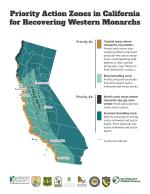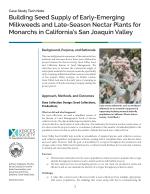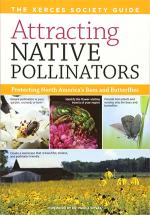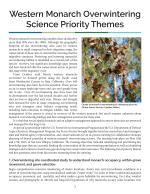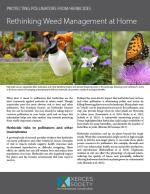As a science-based organization, the Xerces Society produces dozens of publications annually, all of which employ the best available research to guide effective conservation efforts. Our publications range from guidelines for land managers, to brochures offering overviews of key concepts related to invertebrate conservation, from books about supporting pollinators in farmland, to region-specific plant lists. We hope that whatever you are seeking—whether it's guidance on making a home or community garden pollinator-friendly, advice on developing a local pesticide reduction strategy, or detailed information on restoring habitat—you will find it here!
Find Publications
Use the search functions to sort by publication type (books, guidelines, fact sheets, etc.), location, and/or subject (agriculture, gardens, pollinators, pesticides, etc.).
The monarch was proposed for listing in 2014 through a petition submitted by the Xerces Society and our conservation partners, including Center for Biological Diversity, Center for Food Safety, and the late Dr. Lincoln Brower.
The western monarch population is at a critically low level. Work to improve monarch habitat in California is more important than ever. This fact sheet identifies the most important actions that should be taken in five different regions of California, and provides notes and guidance on selecting the appropriate species of milkweeds and nectar plants.
Case Study Tech Note
This case study presents a summary of a three-year project to increase the commercial supply of native plant materials for western monarchs, specifically early-emerging milkweeds and late-season nectar plants of San Joaquin Valley ecotypes.
How you can attract and protect beautiful, beneficial insects
Protect and nurture the best-loved of garden guests: butterflies, nature’s kaleidoscopes with wings. The Xerces Society introduces you to a variety of butterflies who need our help, and provides suggestions for native plants to attract them, habitat designs to help them thrive, and garden practices to accommodate all their stages of life.
Protecting North America’s Bees and Butterflies
Attracting Native Pollinators is Illustrated with hundreds of color photographs and dozens of specially created illustrations across four sections: pollinators and pollination, taking action, bees of North America, and creating a pollinator-friendly landscape. Read it for your own enjoyment or use it as a teaching guide to inform others.
Create a Healthy Habitat to Sustain America’s Most Beloved Butterfly
100 Plants to Feed the Bees provides at-a-glance profiles of plants that provide monarchs with nourishment. The listed plants are all commercially available, and range from milkweeds to flowering plants, shrubs, and trees that provide nectar for the adult butterfly, including those that sustain monarchs in their great migration.
A group of forty key researchers, land managers, state and federal agency representatives, and conservationists for an in-person meeting in May 2023 for collaborative strategic planning of shared priorities of western monarch overwintering science. This fact sheet summarizes the priority themes and key questions that arose from the meeting.
for Pollinators and Beneficial Insects
The plants on this list are recommended for use in pollinator habitat restoration and enhancement projects in agricultural landscapes in the California Central Coast Region.
for Pollinators and Beneficial Insects
The plants on this list are recommended for use in pollinator habitat restoration and enhancement projects in agricultural landscapes in the California Central Valley Region.
for Pollinators and Beneficial Insects
The plants on this list are recommended for use in pollinator habitat restoration and enhancement projects in agricultural landscapes in the California Southern Coast Region.

